Pick
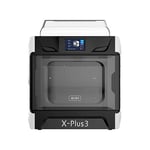

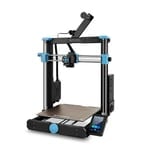
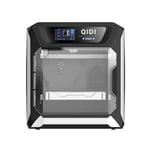
3D printing on larger build areas used to be an achievement with FDM. Getting the bed leveled reliably was a huge challenge, with prints often unsticking and failing on you – sometimes many hours into the process. Thankfully, these frustrating days are behind us now: FDM technology has matured considerably, and, perhaps more importantly, prices have settled at acceptable levels for the average consumer. Today, FDM machines of all shapes and sizes are available to buy – from the tiny to the comically large.
For this guide, we’re looking at the middle ground. Besides the obvious comparison of build volume, we’ve also taken a good look through the spec sheets and testing to understand what truly adds value.
“How have you made these decisions?!” we hear you shouting in the comments. Allow us to explain: We define mid-size (or medium-format, if you prefer) as an FDM 3D printer with a build area of approximately 300 x 300 mm. Why? While machines with 300 x 300 mm seem largeish, they’re not that much of a step up from your 210 x 210 mm machines, and they’re noticeably smaller than the 400 x 400 mm behemoths we cover in our guide to the best large-format 3D printers.
Medium-format machines are ideal for 3D printing larger-than-average things, but not so big you’ll need to get the machine shipped to you in a cartoonishly large wooden crate. Some assembly is typically required, but not a great deal – usually unpacking things and bolting a frame to a pre-assembled base.
When it comes to using the machine, medium-format 3D printers give you greater flexibility with the scale of your printing without having to cut your models in CAD software to fit them on the build plate. These 3D printers are taller than your average desktop 3D printer but can still live on a desk. They’re suitable for setup in your workshop, garage, office, hobby room, or even your living room (although we can’t guarantee your partner will be happy about that).
If a medium-format 3D printer isn’t your thing and you need something of a smaller or larger size, you’re in luck because we have plenty of informed content to answer all your questions. Check out our article on the best large 3D printers. Or, if size isn’t everything, check out our picks of the best small 3D printers. Otherwise, keep reading for our picks of the best medium-format FDM 3D printers.
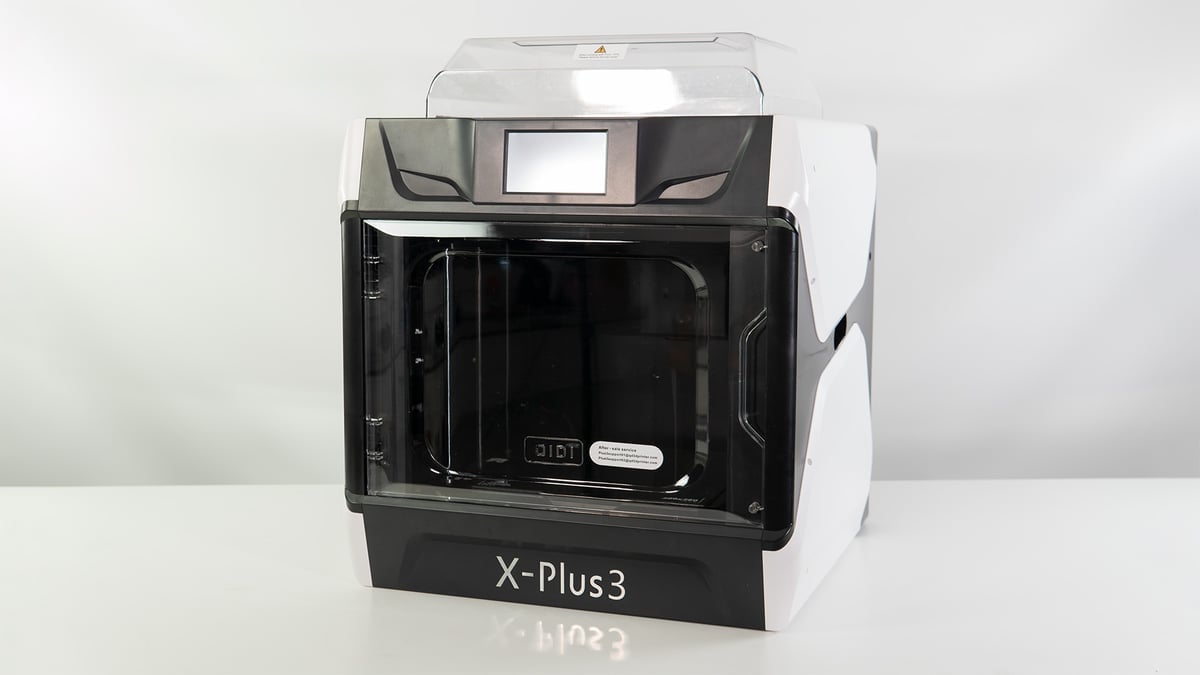
The Qidi Tech X-Plus 3 has been on our radar since it first dropped early in 2023. Unfortunately, it quickly became apparent that the machine needed a little longer in development, with software issues and a minor redesign needed for the printer’s motion system prompting Qidi Tech to stop shipping them. This was a good call because the company returned with one of the better mid-size printers we’ve seen in a long, long time.
For its ~$600 price tag, the Qidi Tech X-Plus 3 gives you a Klipper-based machine with a fully enclosed 280 x 280 mm build area – the smallest on this list, granted, but still in the ballpark of 300 x 300 mm, where we feel “mid-size” begins in desktop 3D printing. It uses a CoreXY motion system and input shaping, allowing it to print up to 600 mm/s in some situations. Speedy acceleration and a high-flow hot end let it put plastic down at a rate that’s on pace with today’s top speed-touting printers.
The X-Plus 3’s (and X-Max 3’s, but we’ll get to that) party trick is an actively heated build chamber capable of bringing the print chamber up to 65 °C. Indeed, this printer is friendly to warp-happy materials, performing favorably against similar-style printers without actively heated chambers in testing. A filament dry box is included as standard, mounting to the back of the printer and serving as the default (and fiddly) spool holding option. Ensure you have generous space around it to accommodate filament changes. Fortunately, it is removable, so you have some creative agency to rework the spool placement as you see fit.
Our primary criticism of the X-Plus 3 (and X-Max 3, since they’re basically the same printer) is the printer not waiting fully to preheat before printing, which seems to negate the benefit of the heated chamber. The printer’s start G-code is set to activate the chamber heating after the first layer, meaning that your print can run for several minutes before the chamber is up to the desired temp.
Additionally, there’s one step of calibration on your part during the setup process. Many printers have done away with setting the Z-offset, but Qidi Tech lags behind in this regard. Fortunately, it was a one-and-done, but that it’s even required is a small blemish on this otherwise seamless experience.
The software experience is pleasant enough – a Qidi Tech-skinned version of PrusaSlicer comes with the machine, complete with integration of the web-based Fluidd interface for direct Wi-Fi access to the printer and a resource page with guides and troubleshooting tips.
Overall, it’s a handily complete package that doesn’t disappoint for the price tag. It’s not the prettiest printer – unless lots of plastic and an overinflated look is your bag, we don’t judge – but it does put down plastic with speed and uniformity, which we absolutely rate it for.

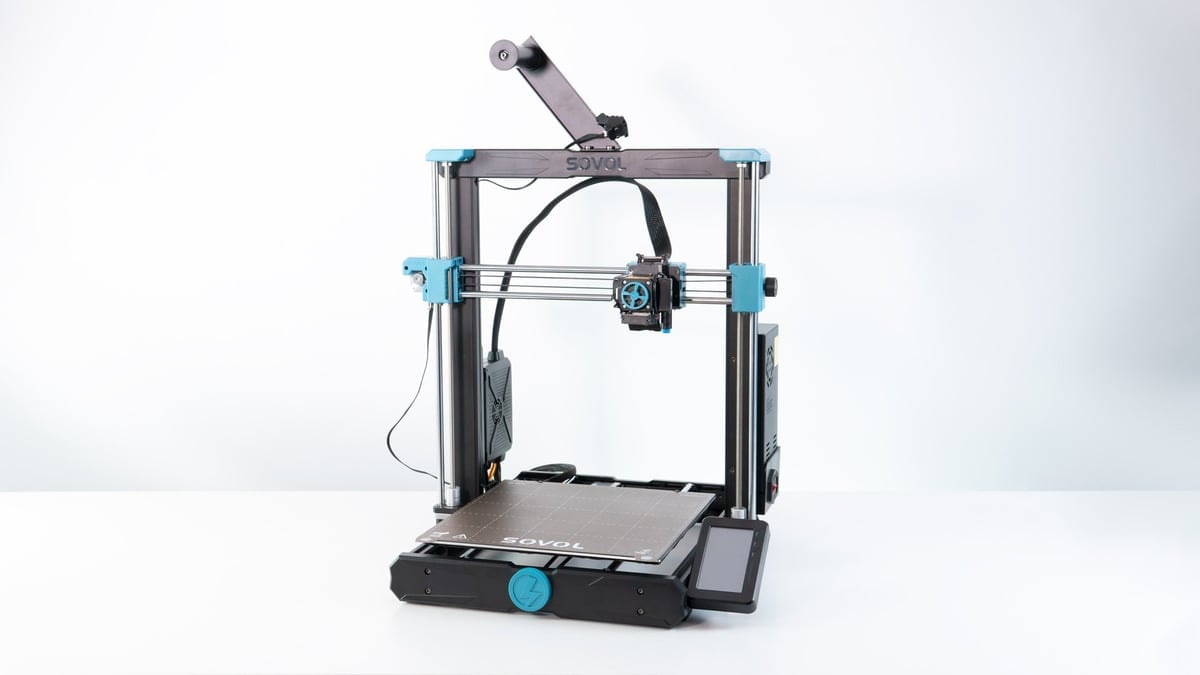
The Sovol SV06 Plus keeps everything we liked about the SV06 and improves on most of the things we didn’t. Throw in a larger 300 x 300 mm build plate and you’ve got the makings of a terrific budget medium-format 3D printer.
For your $279 you get a removable PEI-coated print bed, auto-bed leveling (using an inductive probe), Sovol’s planetary extruder, a long high-flow nozzle fitted to a hot end reaching 300 °C, a filament sensor, and a large, colorful touchscreen UI.
As with the SV06, the SV06 Plus is somewhat reminiscent of the Original Prusa i3 MK3S+; all rods, and plastic bits holding metal bits together, though we’ve no reason to suspect it’s in danger of falling apart any time soon. Actually, the whole build is rather sturdy, although, as with the SV06 there seems to be a break-in period with the printer’s scritchy-scratchy-sounding bearings beneath the print bed.
Material compatibility is wide, with the SV06 Plus rated for PLA, PETG, ABS, and, as with the SV06, flexibles such as TPU. In testing, we found the SV06 actually wasn’t so great with TPU, with the noodly filament easily tangling in the extruder’s planetary gearing. As often seems to be the case, caution with your print settings is advised to coax the SV06 Plus into confident printing of flexibles.
Its age shows a little in the initial operation, too, with some degree of print calibration required on your part, including Z-offsetting. Once set, you shouldn’t really need to do it again.
It’s quiet and capable. On stock settings, the SV06 Plus is faster than the largely comparable Elegoo Neptune 3 Plus, taking approximately half the time to complete a volume-spanning print. If you can stomach the cutesy astronaut loading animation and colorful scheme of its touchpad UI, then the SV06 Plus is the printer to beat for this size of print volume and price point. Oh, and there’s a day/night mode for the UI, which is a nice touch.

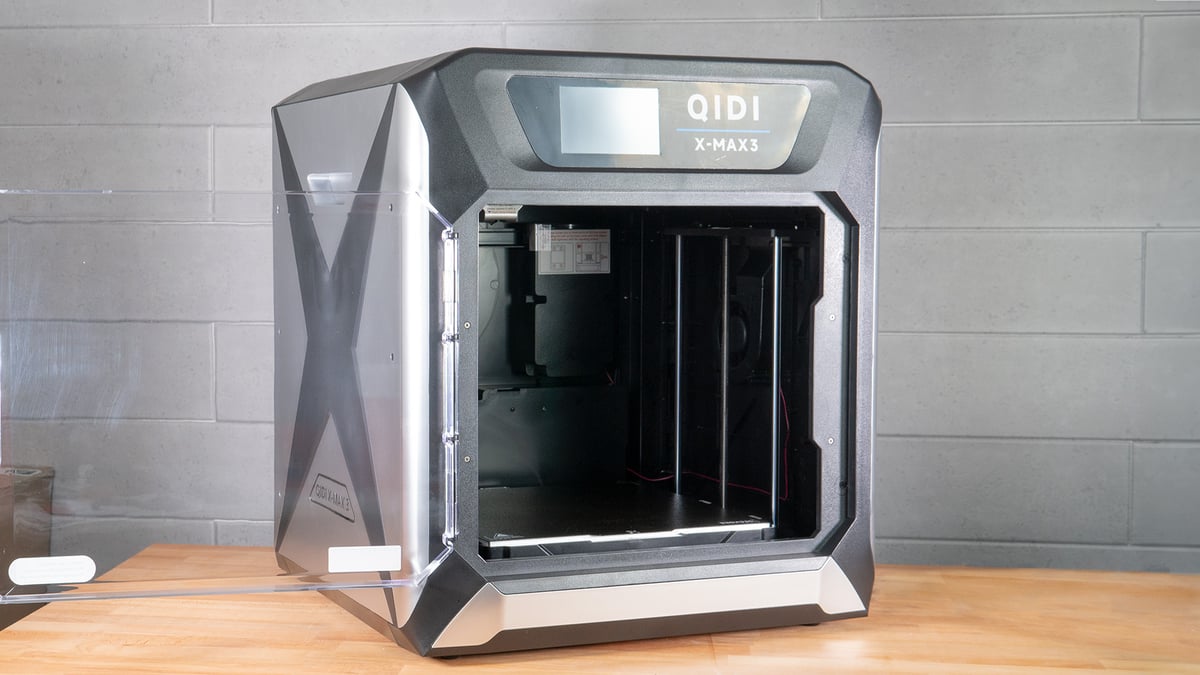
If the Qidi Tech X-Plus 3 is our overall pick, combining great features with an approachable price point, then the X-Max 3 is sitting in the corner, wiggling its eyebrows to tempt those with bigger budgets and slightly larger printing ambitions. It is, fundamentally, the same machine – a fully-enclosed fast-printing CoreXY-style 3D printer – albeit bigger. The only notable difference is the style of bed probe used, with the X-Max 3 using a genuine BLTouch to tap out the mesh for its mesh bed compensation, compared to the X-Plus’ inductive probe. As far as we can tell, this makes no difference to the machine’s performance.
Otherwise, the X-Max 3 is a similarly excellent experience to that offered by the X-Plus 3. There are no platform-specific quirks to contend with; the slicer is a lightly reskinned PrusaSlicer, which is never a bad choice. It gives deep control over your printing, printer, and produces terrific slices for you to print.
Qidi Tech’s use of Klipper with the X- 3 series of machines manifests with the Fluidd web interface baked directly into the slicer (also accessible via web browser). It is one of the better and more cohesive implementations of Klipper in a stock 3D printer that we’ve seen, being largely vanilla. To the uninitiated, this means you have a convenient overview and control of the printer’s operation and various settings. Beyond that, deeper customization options through direct access to the printer’s config files, macros, and whatnot.
Qidi Tech stresses, through the artistic medium of a sticker on the floor of the print chamber, that you should pre-heat the printer before use for optimal performance. Whilst this is, yes, generally good advice, it would’ve been better for the printer to just wait a spell after you hit print. If you specify a particular chamber temperature, the printer won’t wait for it to heat up before starting to print. The beauty of Klipper is that it’s mind-bogglingly customizable, so there’s likely to be a way to address this without much effort on your part.
The use of a filament dry box as the standard spool holder can get irritating, particularly given the X-Max 3’s size. You need side or rear access to handle this printer – it’s too big to reach around in an enclosure or twist on the spot. We can excuse it since the dry box actually serves a purpose, particularly with the printer’s specs accommodating engineering-grade materials that need atmospheric protection. But still, a weak spot prospective buyers should know before dropping the cash on one.
Ultimately, for some dollars short of a grand, the X-Max 3 offers a feature-rich mid-size printing experience – with the largest build volume of all machines in this list. It can print quickly, has great software, and the print quality is great.

Most standard-size desktop 3D printers will have a mid-size “Plus” model to go with them these days. It’s certainly true of our budget pick, the Sovol SV06 Plus, above.
Other Pluses we’ve considered for this guide include the Elegoo Neptune 3 Plus, which is our former budget pick, actually – a solid all-rounder that marginally loses out to the SV06 Plus’ design.
There are newer Pluses that, like the SV06 Plus and Neptune 3 Plus, feature a bed that travels along the Y-axis and push the envelope with print speeds. Historically, it’s a questionable combo, but one that’s mitigated here with the now widespread use of firmware features like input shaping. Anycubic’s new Kobra 2 series and Elegoo’s Neptune 4 series are two culprits, offering speedy bed-slingers with Plus-size build volumes. Between the former missing advertised features and some concerning reports of the latter’s performance, we’ll be giving them ample time in the lab in due course, particularly given their attractive pricing.
One machine that has spent extensive time in our lab lately is the Creality K1 Max. We like it – it’s a competent 3D printer that looks great, offers incredibly convenient remote printing, and generally performs well at speed. Unfortunately, the print bed takes quite some time to equalize at higher temps, it seems, meaning warp-happy materials can be a struggle to reign in. An actively heated chamber could have helped mitigate this, but, as it stands, that’s one area the K1 Max lacks compared to both Qidi Tech printers featured above. In fairness to the K1 Max, its auto-leveling and auto-offsetting work a treat, letting you avoid all calibration tasks. But you can get near the same in the X-Plus 3 for some $200 saved. The price is the sticking point, really. If you find one on sale, the K1 Max isn’t a bad deal, but at its current pricing, we’d opt for the X-Plus 3 instead.
We’ll keep track of all updates to this article here, giving you the full view of past recommendations.
Update – November 30, 2023: Two new picks as Qidi Tech knocks it out of the park with its X- 3 series machines. We’ve also been testing the K1 Max, with our full thoughts on that printer in the Other Machines section above.
Publication – February 16, 2023.
If there’s one thing that testing a lot of 3D printers has taught us, it’s that maintaining a broad benchmarking scheme for 3D printers is impractical for getting a sense of what a 3D printer is like to use and live with. Holding a sub-$200 self-assembled printer for hobbyists to the standard of a $6,000 production machine designed to handle engineering-grade materials won’t tell you that the former is a breeze to set up and the latter a tangled web of firmware updates, buggy systems, and unreliable performance.
We want our reviews and buyer’s guides to cut straight to the chase. What is it like to use a printer? What are the defining features like? What didn’t we like? And, more importantly, is it worth the money? We don’t want to get bogged down benchmarking numbers out of context or hung up on issues affected by more variables than we can control.
Our buyer’s guides and reviews take the intended end user of a 3D printer into consideration. We imagine what they’re likely to do with it and focus the testing on challenging this. If we have a large-volume printer, for example, we’ll be printing – surprise, surprise – large prints, making use of the entire bed, and checking the performance at the limits of Z-height.
Other points of consideration for what makes the best 3D printer include ease of use, supporting software, and repair options. If something goes wrong, how easy is it to fix the machine? Does the documentation or customer service provide adequate information?
We strive to answer all these questions and more in our quest to find the best 3D printer for you.
Trust is important to All3DP, so our product testing policy is strict. When sourcing test units from a manufacturer, we do so under a zero guarantees policy. We make no guarantee of coverage in exchange for the printer, and the first time a manufacturer sees what we think is when we publish the content.
If a manufacturer doesn’t reclaim the unit after testing is complete, it is donated to a local cause or goes into deep storage for responsible disposal later. We occasionally buy machines for testing, too. In such cases, machines purchased by All3DP either remain in the office for team usage or are donated or disposed of in the manner described above.
Manufacturers or benefactors donating units for review do not influence the outcome or content of the reviews we produce. To the best of our ability, we will investigate abnormal issues with the manufacturer to glean better context or get insight into their awareness of the problem. But we make no excuses for poor design or bad QA.
One method we monetize our content at no additional cost to the reader is through affiliate product links. If you click on a shopping link featured in our buyer’s guides and reviews, we may receive a small commission from the store if make a purchase. This is at no additional cost to you. For more meaty content policy details, we cover it all in the advertising and commercial activities section of our terms of use.
For most readers, our top recommended 3D printers are your best bet in a given category.
But, facing the fact that there is no one-size-fits-all solution to home 3D printing, we’re here to help. Here are some pointers to orient you in this terminologically dense but wonderful world. (A word on terminology, we have a handy glossary of terms to know at to bottom of this article.)
Many 3D printers pitched for “beginners” or children go to such lengths to baby the user that they quickly become claustrophobic experiences. You will encounter more limitations than possibilities as your experience grows. If you aren’t satisfied with a “beginner” 3D printer’s features, we’d recommend a budget pick instead. You’ll save a little money, and the opportunity to learn by doing is far greater. And if something goes wrong, there are giant tribes online for each printer that have already asked and answered every question under the sun.
While the general quality of budget 3D printers has dramatically improved in recent years, quality control is often lacking. While manufacturers with large user bases are adapting to meet the demands of their newfound fans, including better customer support, there are usually better wells of knowledge to be found in the owners themselves, who contribute to the vast forum knowledge bases for some 3D printers.
We have zero obligation to manufacturers to sugarcoat what we find, and the first time they read it is when you do too. That’s why you can trust our reviews. We don’t pander to anyone, and our experience with the printer is what you read on the page.
If you can’t find any information about a printer you’d like to know more about, let us know at editors@all3dp.com.
A 3D printer for the home is rarely ever a one-and-done investment. Besides the continual purchase of materials, maintenance costs on perishable printer parts can stack up – think nozzles on an FDM printer or FEP film on an MSLA machine. Of course, parts can wear down or break, too, meaning sourcing replacement parts is a sensible consideration if you plan to print long-term. Printers with roots in the RepRap movement and open-source designs will be easiest to source parts for, with off-the-shelf components part and parcel of the design ethos behind them. Enclosed-design printers aimed at beginners may offer the gentlest introduction to printing, but your options to source spare parts will often be limited to the manufacturer. That’s if you can even get to and diagnose the problem.
The thrill of a new hobby will only sustain you so far. Being the desktopification of an otherwise complicated manufacturing process, expect to encounter, sooner or later, problems with a home 3D printer – even the occasional show-stopping issue. Having an end goal in mind for your printing gives you purpose and a reason to learn the solutions to the problems. Printing simply because it looks cool will result in a small mountain of useless doodads and, eventually, disinterest at the hands of cost, frustration, and the buildup of useless plastic trash.
Most home 3D printers are single extrusion fused deposition modeling machines, meaning a single printable material extruded through a single nozzle. Versatile enough for many applications through material compatibility, they’re safe machines to start with. But if you know you need to print objects with challenging geometries or semi-enclosed volumes, a dual extrusion printer would make your printing far easier. Likewise, single objects that need to have different material properties will only be achievable with dual extrusion. A resin printer will be the way to go for high-detail miniatures. Understand the technologies to find a printer that best suits your needs.
While the size of FDM 3D printers can vary greatly, the spillover is small. You’ll get some emissions from the filament melting, cloying the air, making it inadvisable to spend prolonged periods nearby. Generally speaking, the cleanup is minor and relatively easy to contain, depending on the models you print.
Resin 3D printing, however, is dramatically different and has unique demands that should make you think twice before investing. To varying degrees, the resin is smelly and toxic to you and the environment. It requires dedicated cleanup stations and personal protective equipment. You typically need 95 %+ isopropanol to clean prints and dissolve uncured resin from surfaces.
All printers should be operated in well-ventilated spaces, but this applies doubly to resin 3D printers.
While many excellent 3D printers have gotten their big break on Kickstarter, there’s the unavoidable issue that the platform is not a store. You are not buying a printer when you commit money to a campaign on Kickstarter; you are backing a vision. It’s putting money into the pot to help a company or person trying to achieve something.
You get nothing in return if a project is grossly mishandled and the money disappears. Often what you do get is the beta version of the product. You are paying for early access and all the wrinkles across all stages of the product that come with it.
We’re seeing more big-name companies turning to Kickstarter than ever to launch their products – it’s a safe way for them to gauge demand and drum up some interest against the pressure of a ticking countdown. Despite many companies being capable of outright launching products, they go cap-in-hand to enthusiasts with the promise of shiny new tech. Don’t be that user unless you absolutely must be the first to use a product and have money you can afford to lose.
We don’t think it’s worth the risk, but in the interest of cool new tech, report on new campaigns with our news coverage. You will never see a Kickstarter 3D printer in our buyer’s guides unless it has completed its campaign and the printer is widely available at retail, with all the protections that come with buying from a store.
But where’s the UltiMaker? Or Formlabs? What about Raise3D? Desktop Metal?
In the past, we’d list the best professional 3D printers alongside what we consider consumer or hobby-oriented machines (the printers we mainly focus on). An apples and oranges comparison, we know.
With this in mind, we created All3DP Pro, a wing of our content exclusively covering the professional applications of 3D printing and additive manufacturing solutions. Here’s a selection of articles covering the best 3D printers for professional use to get you started.
Choosing the best 3D printer is tricky, not least because the terminology surrounding 3D printing is dense. Here are some need-to-know terms, their explanations, and useful links to help you on your way to 3D printing mastery.
FDM: Fused deposition modeling, otherwise known as FDM, is a 3D printing process that extrudes heated thermoplastic material through a moving nozzle to build an object layer by layer. FDM is a trademarked term, which led to the RepRap open-source movement to coin the alternative phrase “fused filament fabrication” (FFF), but the two are interchangeable.
Filament: Filament is the base material used to 3D print objects via FDM. The filament is typically a solid thermoplastic fed to a print head, heated to its melting point, and extruded through a small nozzle. Filament is commonly available in spools of either 1.75 mm, 2.85 mm, or 3 mm diameter widths – dimensions that dictate the printers that can use them.
G-Code: G-code is the machine language used to instruct computerized tools such as 3D printers. Giving coordinates and instructions for tool heads and other non-movement functions, it is almost exclusively generated by slicing software. It comprises a library of commands to control specific actions like motion, speed, rotation, depth, and other related switches and sensors used in a machine’s operation. You can get to grips with G-code in no time with our guide to G-code commands.
Heated bed: This is a build plate that is heated so that the few layers of extruded plastic are prevented from cooling too quickly and then warping. A heated bed is essential for working with ABS or PETG materials but not so much with PLA.
Hot end: This is the cluster of components that heat and melt the plastic for deposition through the nozzle.
Extruder: Used by some to describe the entire system of parts that pushes and melts filament, extruder can also refer specifically to the motor and accompanying gears that grip the filament, feeding it to the hot end. How the extruder is arranged can affect the printer and its capabilities. There are two common arrangements: Bowden and direct. It’s a messy subject with overlapping terms and technical explanations; our guide to 3D printer extruders gives you all the knowledge to make sense of it.
Bowden: A style of extruder that sees the extruder motor positioned away from the hot end – typically the structural frame of the printer or on one end of the X-axis gantry. So-called for the Bowden cable and its action of allowing a wire to move freely within tightly constraining tubing, the Bowden extruder feeds filament through a PTFE tube directly into the hot end.
Direct Extruder: The other commonly seen extruder type, a direct extruder sees the extruder motor and associated feeding mechanism mounted directly to the hot end, with barely any distance between the feed and the melt zone of the hot end.
Dual Extrusion: Some 3D printers carry two extruders/hot ends, allowing them to incorporate multiple colors or materials into the same print job. While the obvious appeal comes from the possibility for decorative two-tone prints, the real benefit of dual extrusion systems is combining different materials, such as dissolvable support material, to enable the printing of otherwise impossible geometries. It’s a deep topic worth exploring more in our guide to all you need to know about dual extrusion.
PLA: Polylactic Acid, otherwise known as PLA, is a thermoplastic commonly used as a material for printing with FDM 3D printers. It’s easy to work with and is available in many colors and finishes. PLA is somewhat brittle – don’t expect to print strong items with it – but it remains popular for decorative printing thanks to its low cost. You can learn more about PLA in our guide dedicated to the topic.
SLA: Stereolithography is a 3D printing technology that falls under the broader process of vat photopolymerization. The term is often (incorrectly) used to describe all methods of vat polymerization – really, it’s a particular technology that uses a directed laser beam to trace layers into a vat of liquid photopolymer resin. Alongside SLA, other technologies are considered vat polymerization.
Resin: The material used in desktop SLA, DLP, and LCD (MSLA) 3D printers. A blend of chemicals that includes a photoinitiator, resin solidifies under ultraviolet light. Highly toxic and difficult to clean up after a spill, care, attention, and personal protective equipment are musts when working with resin. It is an unpleasant material, and wastage must be disposed of in accordance with local laws. Despite all the warnings, it’s the only way to go for intricate detail.
LCD 3D Printer: A common term for resin 3D printers that use an LCD as a layer mask over UV light. The de facto standard in inexpensive resin 3D printers, the technology is cheap and widely used. The LCD panels are consumable, though, with monochrome LCDs typically having lifespans in the low 1,000s of hours.
MSLA: Mask stereolithography (MSLA) is a term coined by Structo but popularized by Prusa Research. It refers to, basically, the LCD 3D printer as described above.
Micron: One-thousandth of a millimeter. This unit of measurement is commonly used in 3D printing as a value to indicate accuracy, resolution, or surface finish.
Slicer: 3D printing works by building an object layer by layer. A slicer is a program that divides a 3D model into flat layers and generates the machine code for the printer to trace out said layers. The output of a slicer for FDM 3D printers is typically G-code, which gives instructions and coordinates for the printer to execute. Our deep dive explaining what exactly a slicer is gives good foundational knowledge. Many popular slicers are free and open source. Others are proprietary and machine-specific. It’s an essential tool for successful 3D printing.
STL: STL is the most popular file format for 3D printing. Developed by 3D Systems in the ’80s, the STL file type only contains the surface geometry of a 3D object. Despite industry efforts to move onto more efficient and data-rich formats such as 3mf, STL endures and is the most commonly found 3D model file type on popular 3D model file repositories. We explain in more detail in our guide to what exactly STL is.
Open Source: The term given to a product, typically software, but also applicable to hardware that is freely open for others to modify and redistribute according to their needs. In 3D printing, this is often in the spirit that individuals are free to modify, improve, and share changes to the source material for others to test, iterate, and reciprocate. Open source licenses govern the fair and correct usage of open source works, giving terms and conditions that ensure the freedom of access to the creation and any derivatives.
RepRap: A project started in 2005 by Dr. Adrian Bowyer, a mechanical engineering lecturer at the University of Bath. Created to develop a replicating rapid prototype, a low-cost machine capable of printing replacement parts for itself or other new machines. The vast majority of desktop 3D printers stem from the work laid down by the RepRap project. We have a fascinating alternative RepRap Wiki page on the topic if you want to dig deeper.
License: The text of "The Best Medium-Sized 3D Printers of 2023" by All3DP is licensed under a Creative Commons Attribution 4.0 International License.
CERTAIN CONTENT THAT APPEARS ON THIS SITE COMES FROM AMAZON. THIS CONTENT IS PROVIDED ‘AS IS’ AND IS SUBJECT TO CHANGE OR REMOVAL AT ANY TIME.